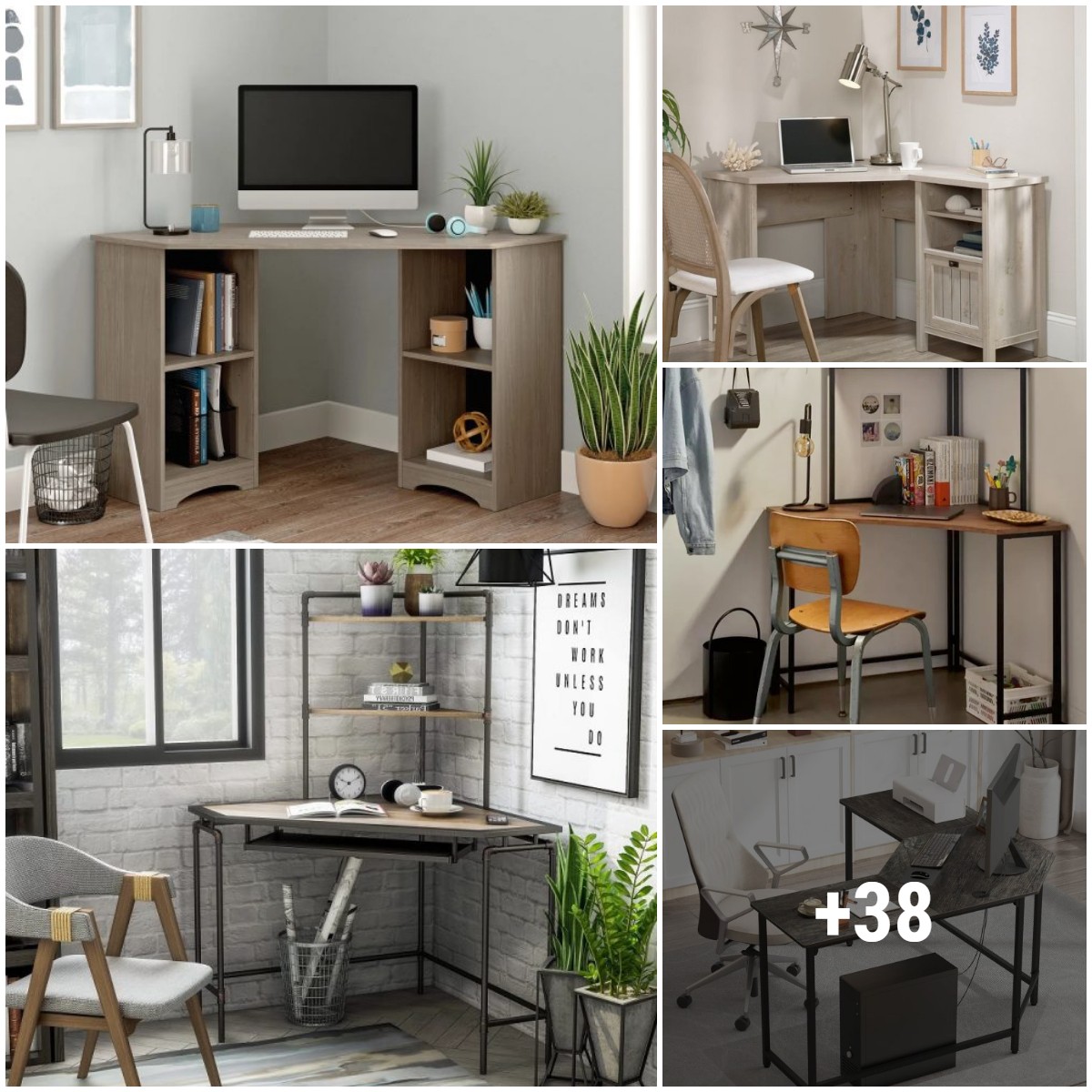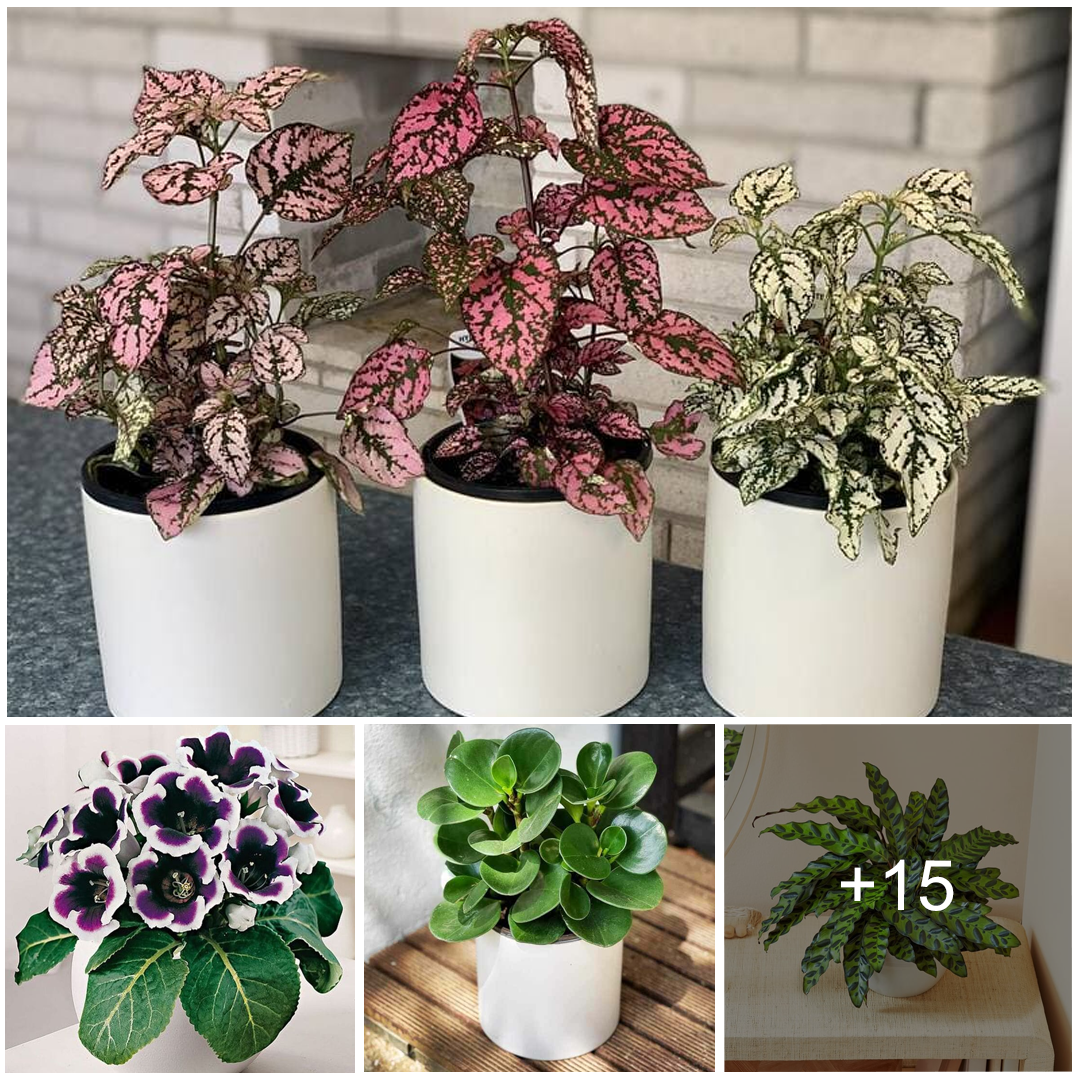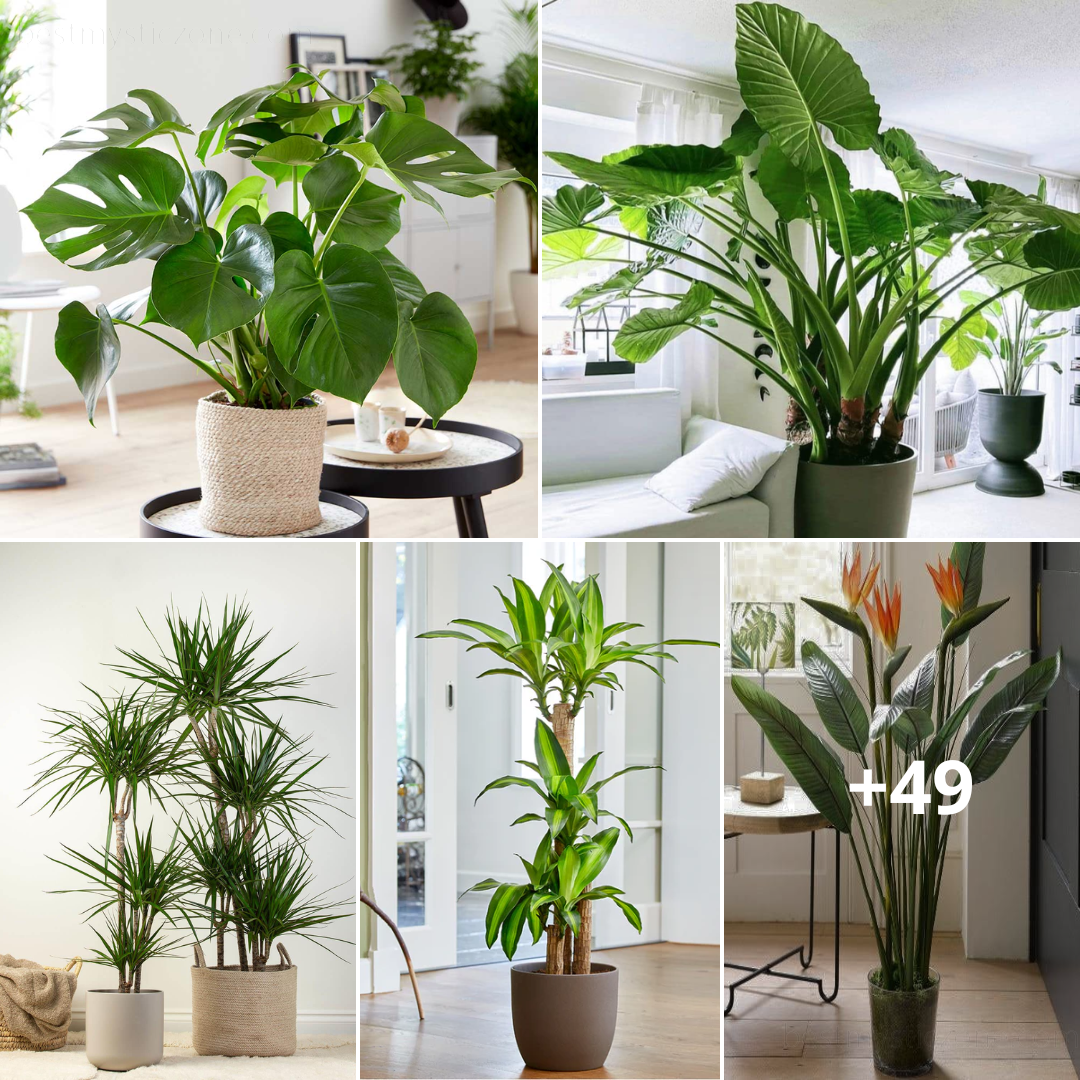Would you like a new small indoor houseplant to bring beauty into your home? Check out these small and cute plants we rounded up for you!
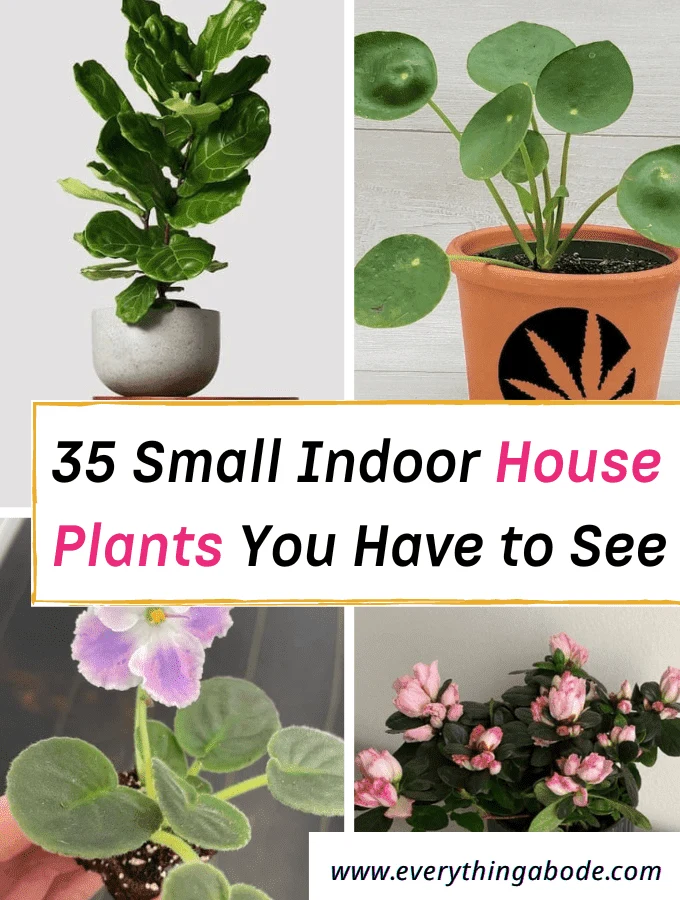
Small indoor houseplants don’t require a green thumb.
Better yet, if you don’t have a garden, having small plants in your home can significantly improve your health and lifestyle.
Not only can houseplants give off a calming and inviting atmosphere, but they can also improve your physical and mental health!
Small plants, in particular, are the perfect option for beginners. They require less maintenance and are easier to take care of.
In addition, small indoor plants are a great way to spruce up your home without taking up too much space.
From succulents that can fit on your windowsill to dwarf tree plants that can take up a corner of your living room, there are plenty of options for small plants to bring beauty into your home.
They are aesthetically pleasing and have many health benefits, from purifying the air, to reducing stress and increasing productivity.
Studies have shown that having houseplants around can help to reduce anxiety and depression, as well as boost your overall mood.
So if you’re looking for an easy way to add beauty and life to your home, small indoor plants are perfect.
35 Small Indoor House Plants That Can Fit Almost Anywhere
1. Fiddle Leaf Fig.
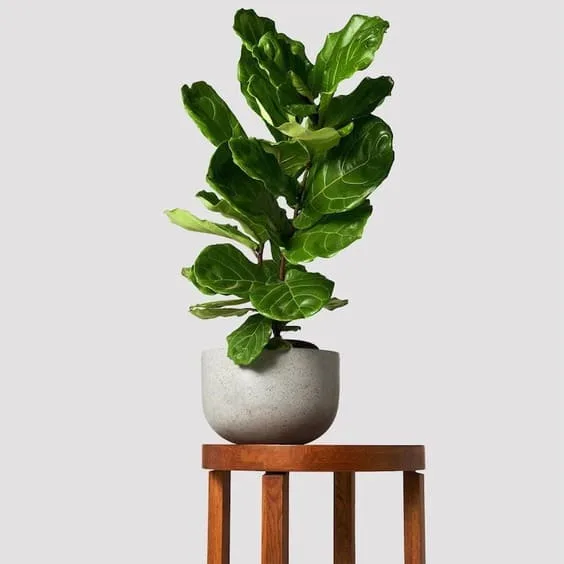
The Fiddle Leaf Fig plant is a popular small plant because it is easy to care for, it grows quickly, and it is very attractive.
Health Benefits:
It also has large, glossy leaves that can help purify the air. Additionally, its size makes it ideal for small apartments and spaces, and it is said to bring good luck and fortune.
Caring Instructions:
– Place in bright, indirect light.
– Water when the top 2-3″ of soil is dry.
– Use well-draining soil.
– Prune as needed.
– Fertilize once a month during the growing season.
– Keep away from drafts and direct sunlight.
2. Chinese Evergreen.
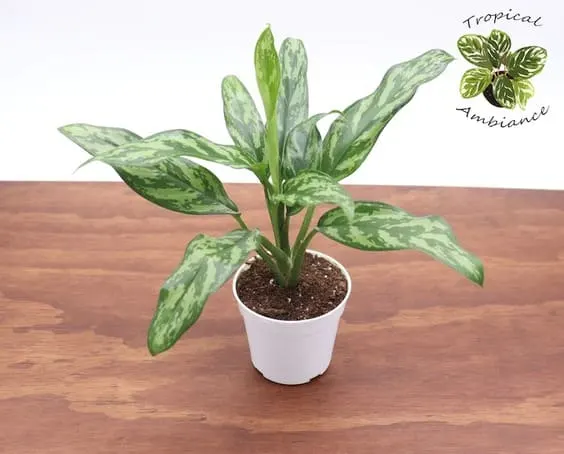
The Chinese Evergreen house plant is a beautiful tiny house plant characterized by its long, dark green leaves with white, silver, or yellow stripes.
Moreover, it is a popular small plant due to its forgiving nature and ability to thrive in low light and high humidity.
Health Benefits:
The Chinese evergreen plant is a popular small plant that brings moisture to the room while cleansing the air of toxins.
Care For Chinese Evergreen Plant:
– Provide bright, indirect light.
– Water when the top inch of the soil is dry.
– Feed the plant monthly with a balanced liquid fertilizer.
– Humidity is important; mist regularly or place the pot on a tray of wet pebbles.
– Prune off yellow or dead leaves as needed.
3. ZZ Plant.
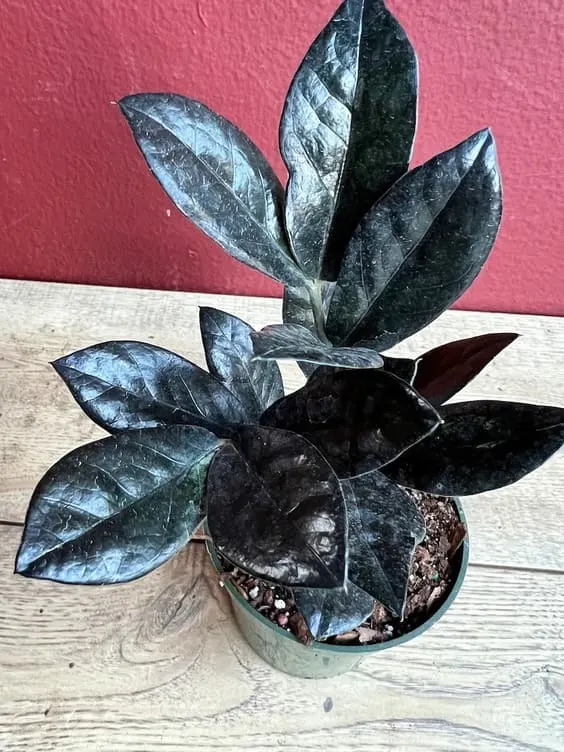
The ZZ House Plant is a small tropical evergreen with glossy, dark green leaves (sometimes black if propagated) that grow in a rosette pattern.
It is a popular houseplant because it is easy to care for and tolerant of low light, infrequent watering, and low humidity.
To Care For A ZZ Plant:
– Place in a bright, indirect light.
– Water when the top 2 inches of soil are dry.
– Use well-draining soil.
– Mist occasionally.
– Fertilize every 2-3 months.
– Repot every 2-3 years.
4. Monstera (Swiss Cheese Plant).
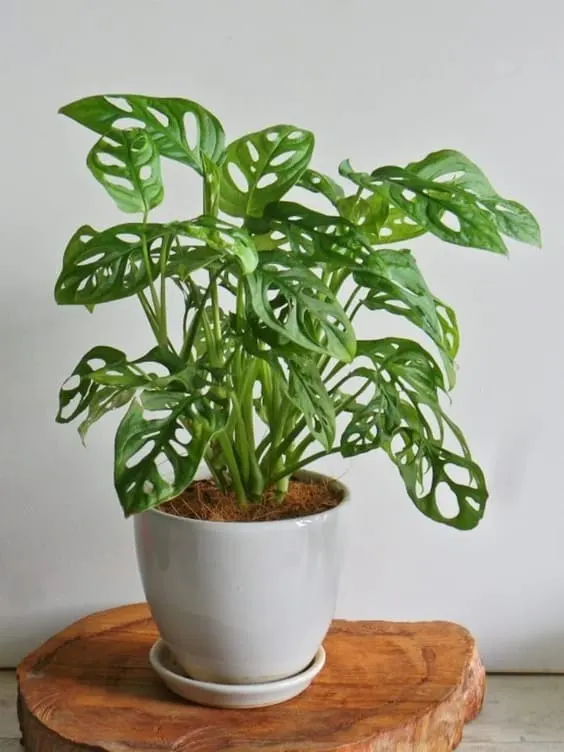
The Monstera indoor houseplant is a popular small house plant known for its large, heart-shaped leaves with natural holes and splits that give it a unique and exotic look.
It prefers indirect, bright light and likes to be watered deeply when the soil is dry, but not too often.
To Care For A Monstera Plant, Follow These Steps:
– Place in indirect, bright light.
– Water deeply when the soil is dry and avoid overwatering.
– Mist the leaves regularly to increase humidity.
– Feed with a balanced fertilizer during the growing season.
– Prune as needed to maintain desired size and shape.
5. Snake Plant.
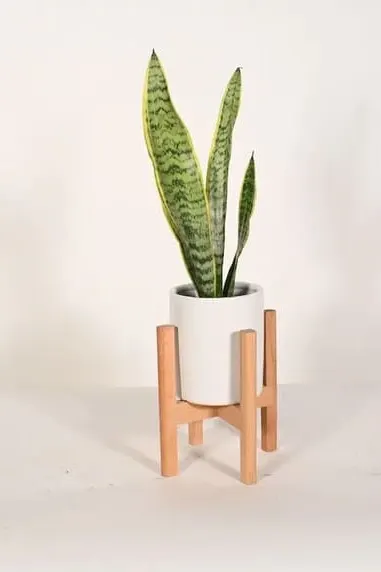
The Snake Plant is a striking indoor plant/succulent with long, upright, variegated leaves that can reach up to 4 feet tall. Its modern and minimalistic look makes it a popular small houseplant to own.
Care For The Snake Plant:
– Place in bright, indirect sunlight.
– Allow soil to dry out between watering.
– Water every 1-2 weeks.
– Fertilize every couple of months with a balanced fertilizer.
– Prune off dead leaves as needed.
6. Peace Lily.
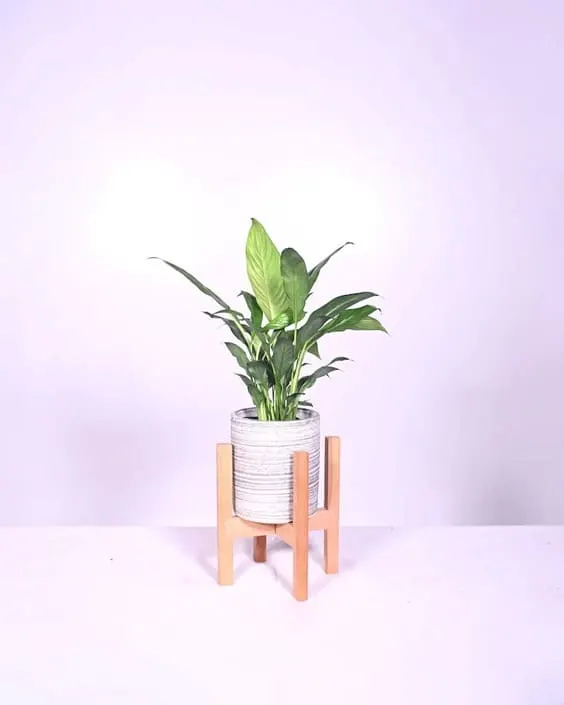
The peace lily plant is another popular choice for small indoor plants because it is easy to care for, does not require a lot of sunlight, and filters harmful toxins out of the air.
It also produces white flowers that bloom throughout the year, adding a touch of beauty to any room.
The peace lily is known to help reduce stress and boost mood, as well as help reduce air pollution in small, enclosed spaces.
It also requires minimal care, making it an excellent choice for busy households.
To Care For A Peace Lily Plant:
– Place in bright, indirect light
– Keep soil moist but not soggy
– Water when soil is dry to the touch
– Fertilize once monthly during spring and summer
7. Spider Plant.
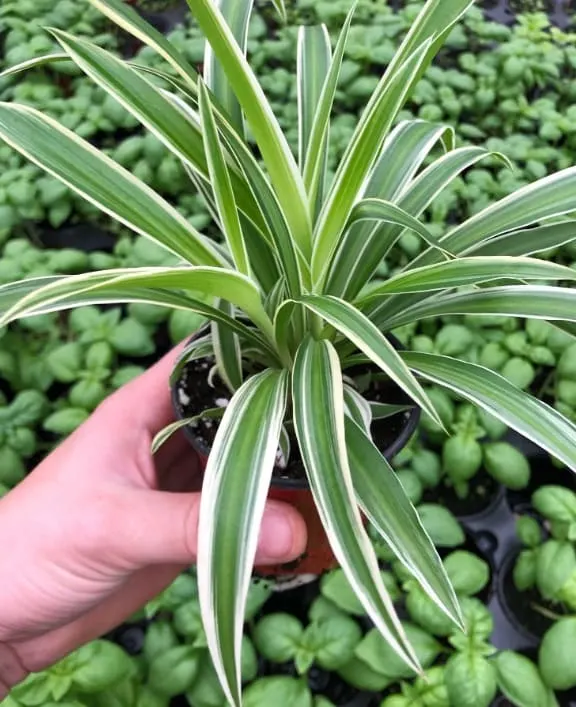
The Spider plant is another attractive, easy-to-care-for houseplant with long, arching, grass-like leaves that are usually striped with shades of green, white, and yellow.
Its popularity lies in its resilience and ease of care: it can thrive in various lighting conditions, temperatures, and humidity levels, making it an excellent choice for both beginners and experienced indoor gardeners.
Health Benefits:
The Spider plant is also known to be a natural air purifier and can help remove harmful toxins such as formaldehyde, benzene, and carbon monoxide from the air.
Care Tips:
– Place in bright, indirect sunlight.
– Water when the top 2-3″ of soil is dry.
– Feed with a balanced liquid fertilizer every two weeks in spring and summer.
– Repot every two years or when the plant becomes root-bound.
– Trim off yellow leaves to encourage new growth.
8. Chinese Money Plant.
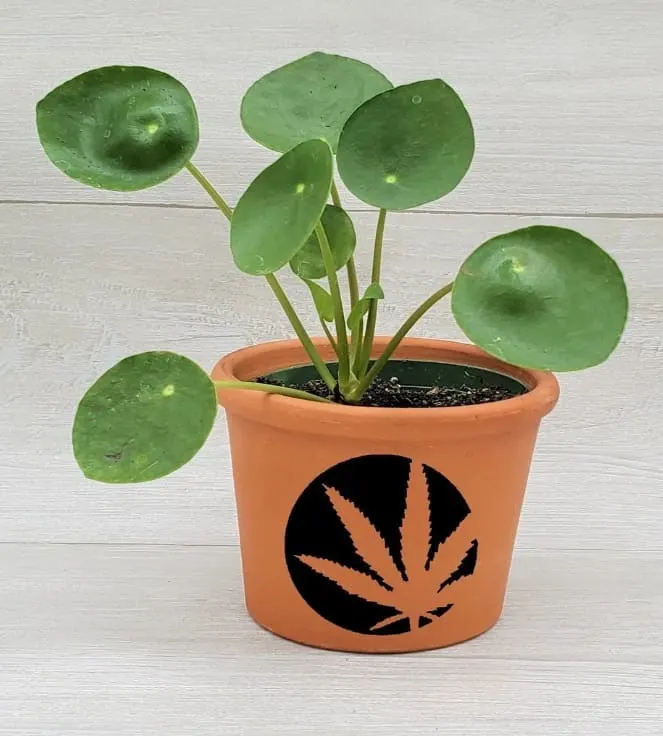
The Chinese Money Plant (also known as UFO plant) is an evergreen perennial that grows in a rosette-like shape. It has large, round, waxy leaves in green, yellow, and white shades.
It is an easy-to-care-for plant famous for its low maintenance and air-purifying qualities.
This plant is also considered a lucky plant, associated with good luck and fortune. In Chinese culture, this plant is believed to bring prosperity and wealth.
Health Benefits:
– Natural air purifier – eliminates formaldehyde, benzene, xylene, and toluene from the air.
– Relieves stress.
– Reduces fatigue.
– Promotes good sleep.
Care Instructions:
– Place in bright, indirect sunlight
– Water when the top inch of soil feels dry
– Allow soil to dry out between watering
– Do not over-water
– Fertilize once a month during the growing season
– Prune back leaves as needed
9. Aloe Vera.
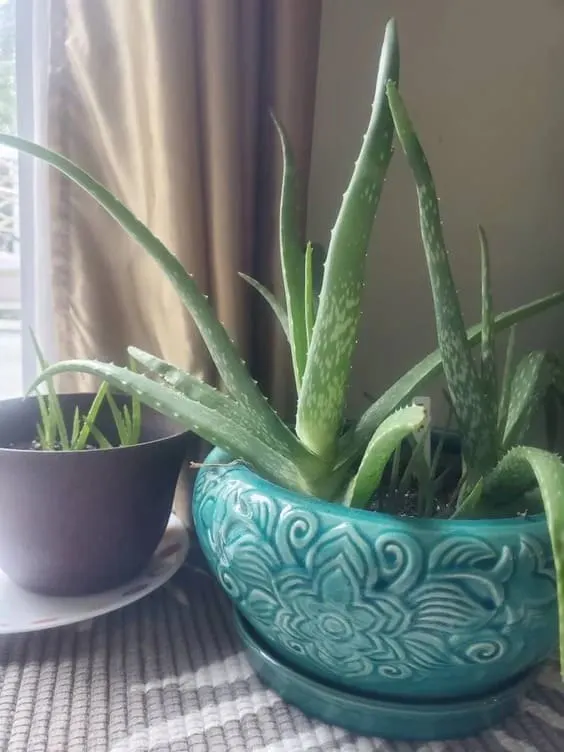
The Aloe Vera indoor houseplant is actually a succulent with thick, spiky, serrated leaves with a green-grayish hue.
It is a popular houseplant because it is easy to grow and care for and can even thrive in indirect sunlight.
Health Benefits:
It is also known for its many health benefits, such as being a natural anti-inflammatory and moisturizer, aiding digestion, and even helping with skin conditions such as acne and sunburn.
To Care For This Plant:
– Place in a pot with well-draining soil
– Give it indirect sunlight
– Water when soil is dry
– Fertilize every two to three months
– Trim off dead leaves
10. Rubber Plant.
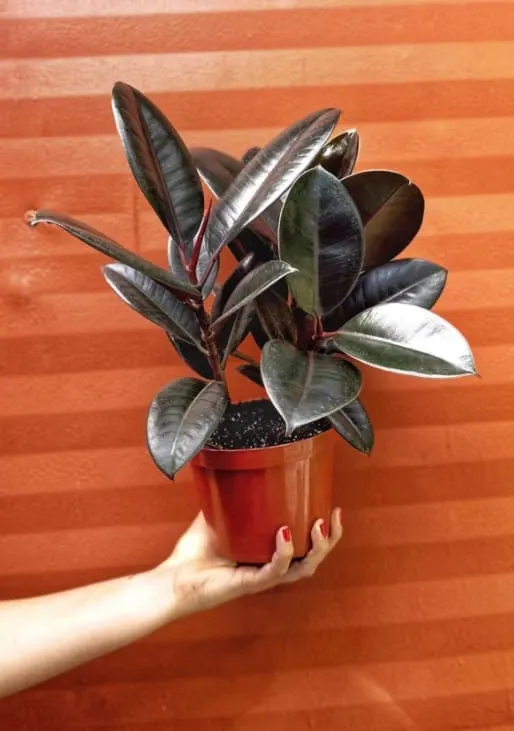
The Rubber Plant is a trendy small house plant with thick, shiny, oval-shaped deep green leaves.
Rubber Plants are popular because they are low maintenance and can tolerate common light conditions, making them an excellent choice for homes and offices.
Health Benefits:
The small indoor plant also helps to purify the air and reduce stress levels, making them a perfect choice for health-conscious owners.
To Care For A Rubber Plant, Follow These Steps:
– Provide bright, indirect sunlight.
– Water when the topsoil is dry.
– Mist the leaves regularly.
– Keep temperatures between 60-75°F.
– Fertilize once a month.
– Prune as needed to control growth.
11. Pothos.
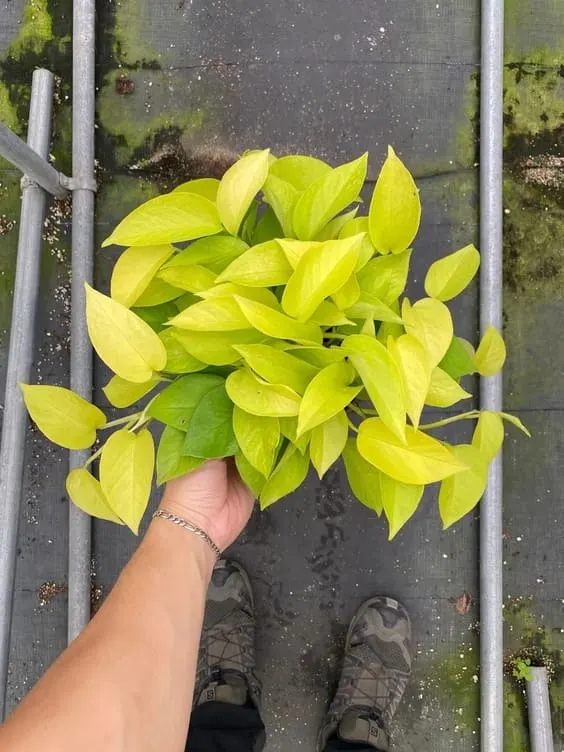
The Pothos plant is a tropical, evergreen vine with distinctive heart-shaped leaves. It grows in a variety of colors, from bright green to cream, yellow or white.
It is a popular small houseplant because it is easy to care for and can tolerate low light levels and a wide range of temperatures.
Health Benefits:
It is also known to help reduce air pollution, improve air quality, reduce stress levels and help purify the air.
Caring For Pothos:
– Give it bright, indirect light.
– Keep the soil moist but not soggy.
– Feed it monthly with a balanced liquid fertilizer.
– Prune regularly to keep it tidy.
– Propagate by taking cuttings and planting in soil or water.
12. Dracaena.
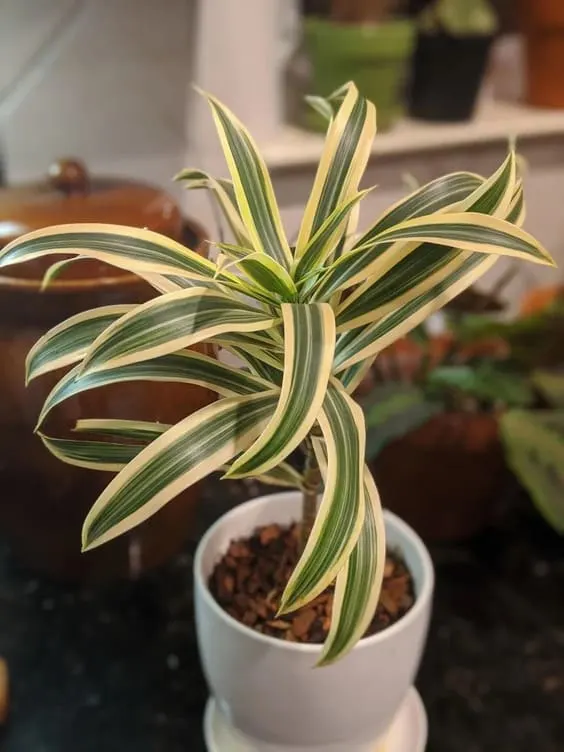
The Dracaena indoor houseplant is another attractive, low-maintenance tropical houseplant with distinctive foliage and tall, woody stems.
This plant can range from small tabletop plants to larger floor plants. The leaves are often long and wide, with colorful stripes and patterns along their edges.
The stems can vary in color from green to brown, sometimes with a hint of red or yellow.
Health Benefits:
It also helps to purify the air by removing pollutants, making it an excellent choice for indoor spaces.
The Dracaena plant also improves air quality, oxygen levels, and overall health.
Care For Dracaena Plants:
– Provide bright, indirect light.
– Water when the soil is dry.
– Prune to control size and shape.
– Check for pests and diseases regularly.
13. Calatheas.
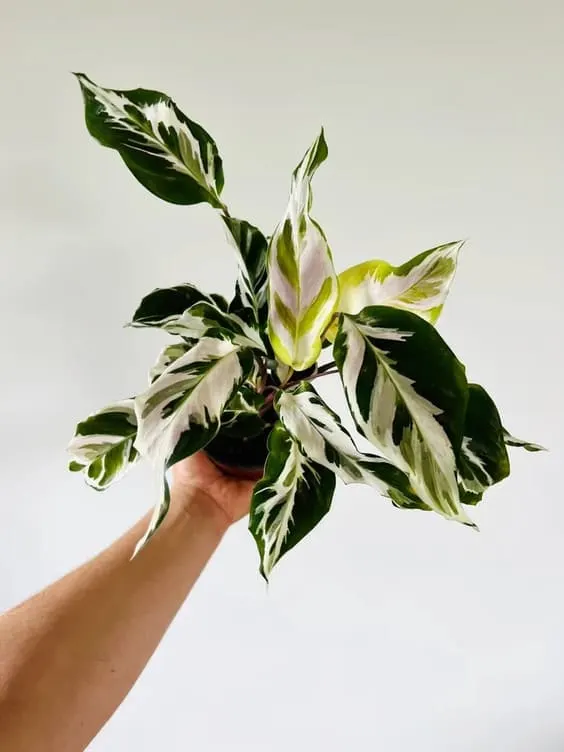
The Calatheas small house plant is a widespread tropical plant with attractive foliage and leaf patterns. Its leaves are usually variegated with shades of green, white, silver, or cream.
It is famous as a small houseplant because it is easy to care for, is relatively low maintenance, and can thrive in a wide range of temperatures and light levels.
Health Benefits:
-Air purification – The Calatheas plant helps to filter air pollutants and reduce indoor air pollution.
-Humidity – The Calatheas plant helps to increase humidity levels in homes and offices.
-Stress reduction – The Calatheas plant is said to reduce stress levels and improve mental health.
Care Instructions:
-Provide bright, indirect sunlight.
-Keep the soil moist but not soggy.
-Keep away from cold drafts and temperatures below 50 degrees Fahrenheit.
-Keep away from direct sunlight.
-Prune and shape as required.
14. Philodendrons.
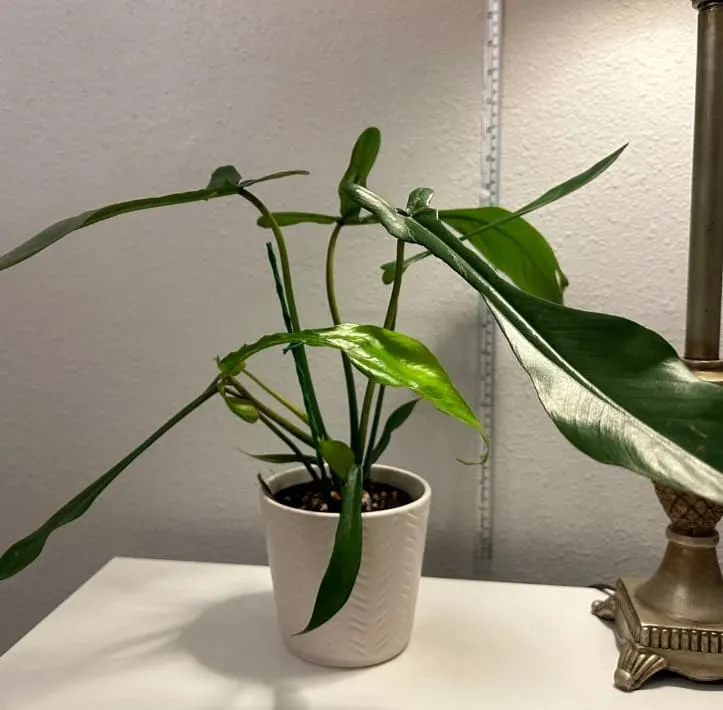
The Philodendrons plant is an evergreen, climbing plant with glossy, heart-shaped leaves that can reach up to 12 inches long. It is easy to care for as a small houseplant and is popular for its lush foliage and air-purifying qualities.
Health Benefits:
It is known to help reduce stress and anxiety and improve sleep quality.
Care For Philodendrons:
– Place in bright, indirect sunlight.
– Water when the soil feels dry.
– Keep humidity levels high.
– Fertilize monthly in the spring and summer.
– Prune back to promote new growth.
15. English Ivy.
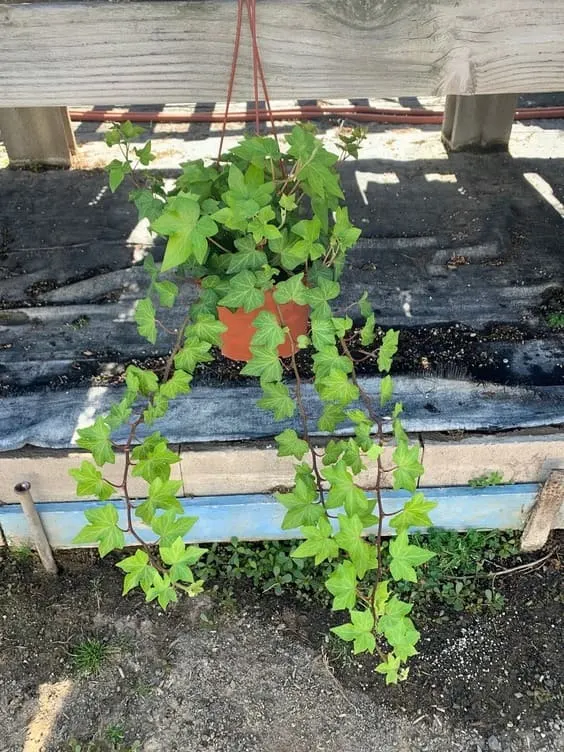
The English Ivy plant is a climbing, evergreen vine that has glossy, dark green leaves and aerial rootlets that cling to the surfaces it climbs.
It is a popular small hanging houseplant because of its attractive foliage and ability to thrive in many different environments.
Health Benefits:
– Aids in air purification.
– Reduces levels of mold and bacteria.
Care Instructions:
– Place in bright indirect sunlight
– Water regularly, allowing the soil to dry between waterings
– Prune as needed to keep the plant looking neat
– Feed with a liquid fertilizer every other month
– Repot when needed.
16. Weeping Fig.
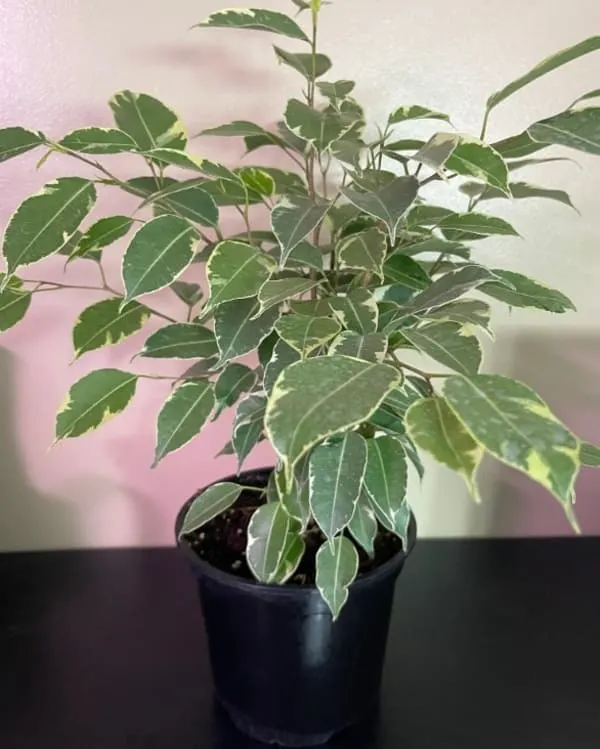
The Weeping Fig is an evergreen tree with glossy, dark green leaves and a light gray bark. It has a graceful, drooping silhouette and can grow up to 10-20 feet tall. It is a popular small houseplant because it requires minimal care and is very forgiving to the novice gardener.
Health Benefits:
Health benefits of the Weeping Fig plant include air purification, improved air quality, and the ability to reduce stress and anxiety.
To Care For A Weeping Fig Plant:
– Provide bright, indirect sunlight.
– Water when the soil is dry.
– Prune to maintain the desired shape.
– Fertilize monthly during the growing season.
– Mist leaves regularly to maintain humidity.
17. Calathea Roseopicta.
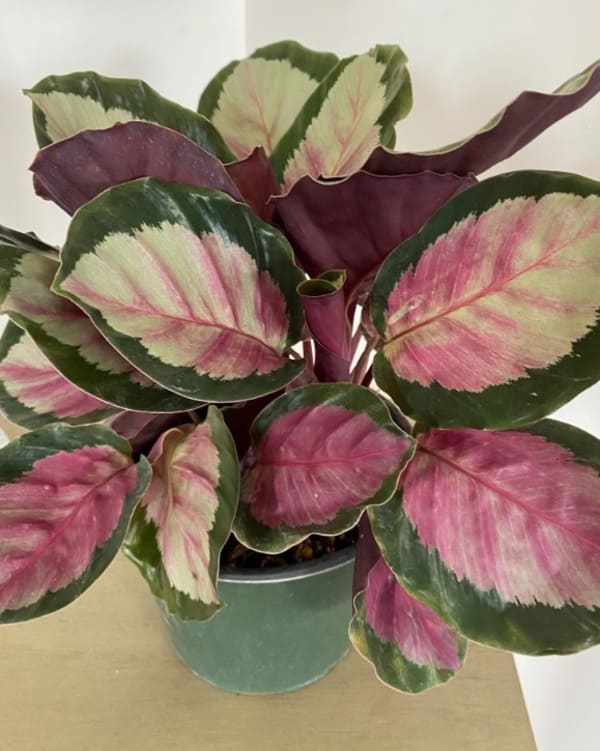
The Calathea Roseopicta is a popular small houseplant characterized by its bright green and pink striped foliage. Its attractive leaves make it a favorite among many plant owners.
Health Benefits:
Health benefits of Calathea Roseopicta include air purification, clearing of toxins in the atmosphere, and improved humidity levels.
Care For Calathea Roseopicta Includes:
-Provide indirect sunlight or artificial light.
-Keep the soil moist but not soggy.
-Avoid extreme temperatures.
-Clean its leaves with a damp cloth.
18. Aglaonema.
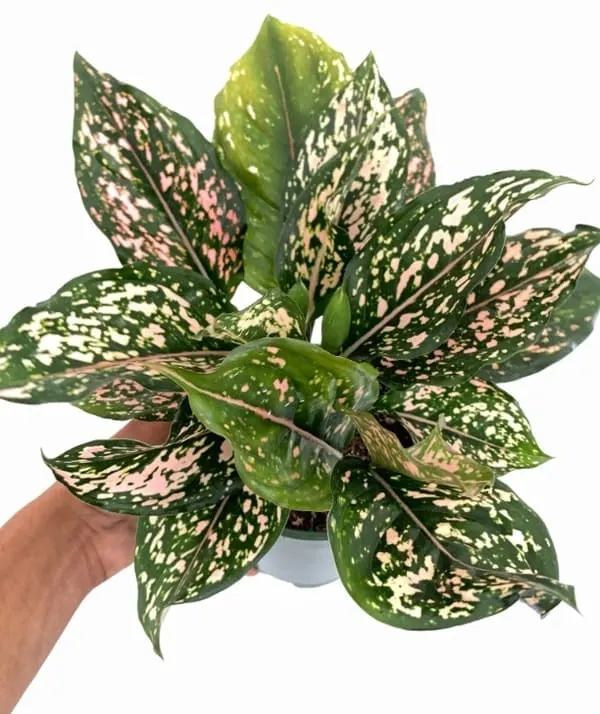
The Aglaonema plant is popular because of its attractive evergreen foliage and easy care requirements.
It is a low-maintenance plant with glossy green and silver leaves that come in various shapes and sizes. This plant can grow to an average height of up to three feet and can be found in various colors.
Health Benefits:
The Aglaonema plant is known for its air-purifying abilities, allowing it to remove toxins from the air and increase oxygen levels. It is also believed to reduce stress and improve sleep quality.
To Care For An Aglaonema Plant, Here Are Some Simple Tips:
– Place in a bright spot, but not in direct sunlight.
– Water when the top inch of soil is dry.
– Mist leaves to increase humidity levels.
– Fertilize once a month during the growing season.
– Prune regularly to keep the plant compact and tidy.
19. Golden Pothos.
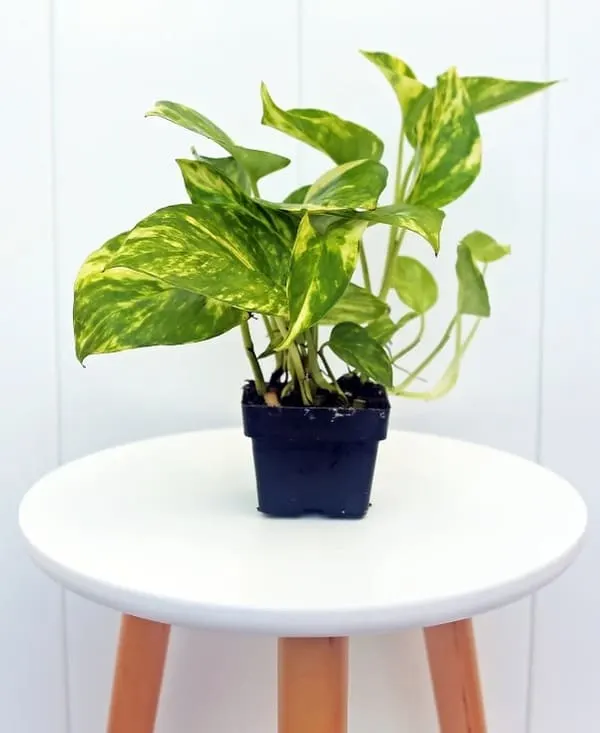
The Golden Pothos plant is a popular trailing or climbing plant with heart-shaped, golden-green leaves. It is popular because it is easy to care for, is low maintenance, and can tolerate low light conditions.
Health Benefits:
It also has air purifying benefits, can reduce stress, and help with sleep.
To Care For A Golden Pothos Plant:
– Provide bright, indirect sunlight.
– Water when the soil is dry to the touch and allow excess water to drain.
– Prune regularly to encourage new growth.
– Fertilize every few weeks in the spring and summer.
– Keep the temperatures between 65-85F (18-29C).
20. String Of Pearls.

The String of Pearls plant is an attractive, small succulent plant featuring long, trailing stems of round, bead-like leaves.
It is a popular houseplant due to its unique appearance and low-maintenance care requirements.
Health Benefits:
The plant is known for helping to purify the air by filtering out toxins and pollutants and can help to reduce stress and improve mood.
Caring For The String Of Pearls Plant:
– Place in bright, indirect light.
– Water only when the soil is completely dry.
– Use well-draining soil.
– Feed with a balanced fertilizer every few months.
– Protect from drafts and sudden temperature changes.
– Prune stems and leaves regularly to promote bushier growth.
21. Christmas Cactus.
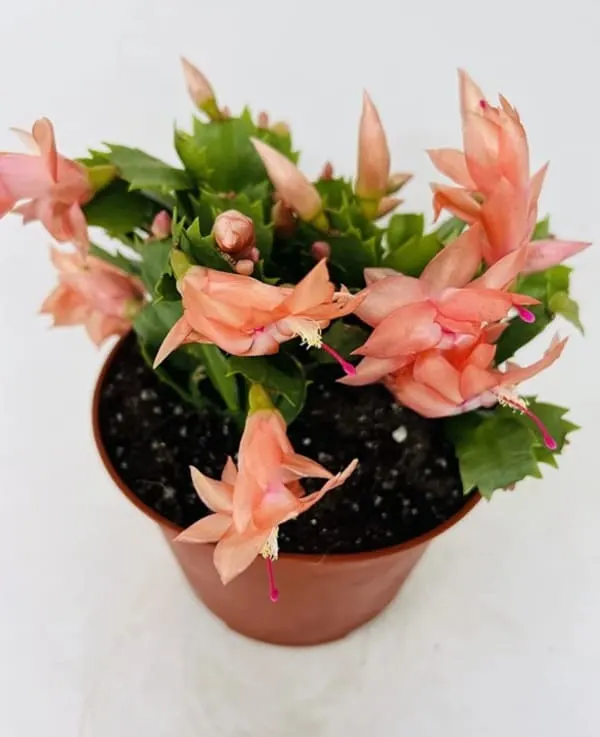
The Christmas Cactus is a colorful, vibrant plant that is easily recognizable due to its unique look. It has waxy, pointed, segmented leaves and bright, vibrant blooms.
It is an ideal indoor houseplant, as it is easy to care for and blooms during the holiday season, making it a popular choice for the holidays.
Health Benefits:
The health benefits of the Christmas Cactus include improving air quality by removing toxins such as formaldehyde, benzene, and carbon monoxide. It is also known to help reduce stress and anxiety.
How To Care For A Christmas Cactus:
– Place in bright, indirect sunlight.
– Water when the soil is dry.
– Fertilize once a month during spring and summer.
– Prune back to encourage new growth.
– Repot when necessary.
22. Hoya.
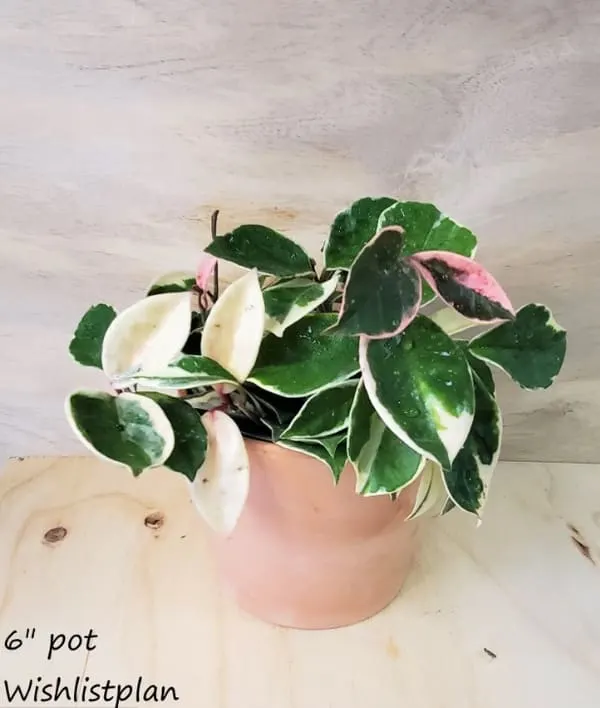
The Hoya plant is a popular small houseplant known for its waxy, green leaves and clusters of fragrant, star-shaped flowers.
The Hoya is an easy-to-care-for, low-maintenance plant with attractive foliage and sweet-smelling flowers.
Health Benefits:
The health benefits of the Hoya plant include improved air quality and humidifying the air.
Care For A Hoya Plant:
– Provide bright, indirect light.
– Water when the top 1-2 inches of soil is dry.
– Fertilize once a month during the growing season.
– Prune to maintain the desired shape.
– Provide support for the climbing varieties.
23. Air Plants.
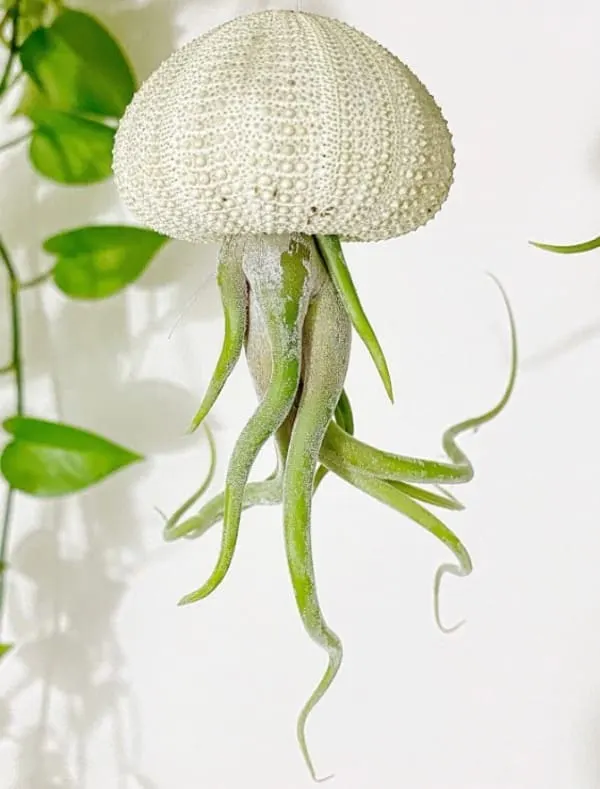
Air Plants, also known as Tillandsia, are a genus of small, epiphytic plants with grey, silvery leaves and colorful flowers. They are popular house plants because they require very little maintenance, only needing a light misting of water every one to two weeks.
Health Benefits:
The health benefits of air plants include air purification, as they can absorb toxins from the air, such as formaldehyde and benzene. They also help increase humidity and oxygen levels in the home.
Caring For An Air Plant Is Easy:
– Mist with water 1-2 times a week.
– Place in indirect sunlight for 2-4 hours.
– Soak in a bowl of water for 1 hour once a month.
– Fertilize once a month.
– Trim off dead leaves as needed.
24. Bird’s Nest Fern.
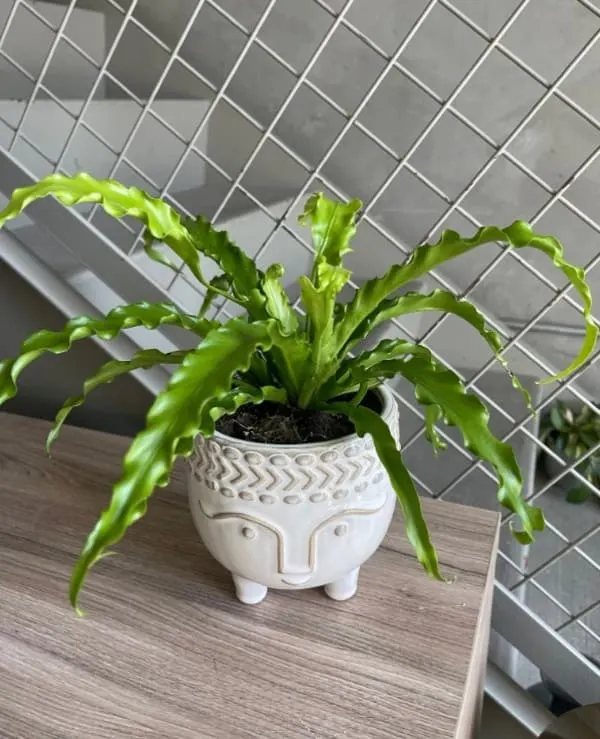
The Bird’s Nest Fern is an evergreen, tropical, epiphytic fern native to Southeast Asia.
It has a rosette-like form with tightly curled, bright green fronds held in a compact, bowl-like shape.
The Bird’s Nest Fern is also a very easy-to-care-for plant that thrives in various conditions and environments. Perfect for beginner gardeners and even those with a busy lifestyle.
Health Benefits:
It is known for improving air quality by absorbing toxins such as formaldehyde and xylene and increasing humidity in the home.
Caring For A Bird’s Nest Fern:
– Place in bright, indirect sunlight.
– Water when the soil is dry.
– Feed with a dilute liquid fertilizer every month during the growing season.
– Repot every two to three years.
– Prune fronds as needed to maintain shape.
25. Bromeliads.
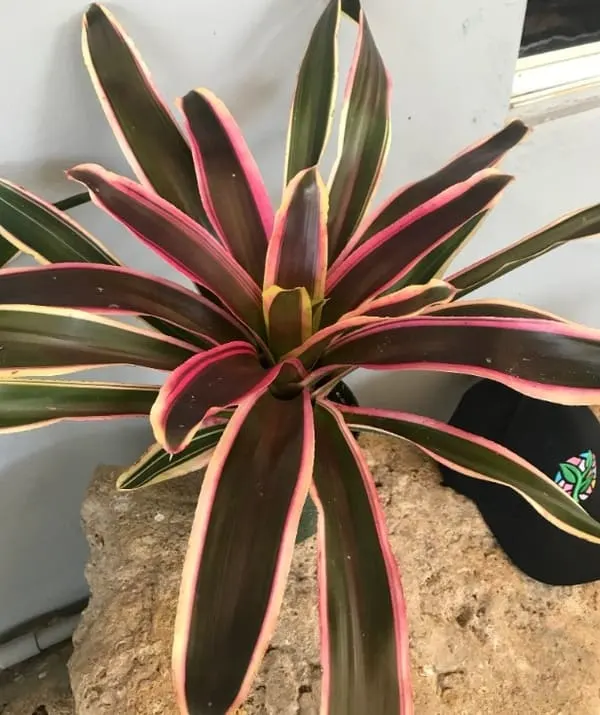
Bromeliad plants are tropical plants that feature bright, colorful leaves. They are popular small house plants because of their vibrant colors and unique shapes.
They also require minimal maintenance and can be grown in many environments.
Health Benefits Include:
The health benefits of Bromeliads plants include improved air quality, reduction of airborne toxins, and increased oxygen.
To Care For Bromeliads Plants, Follow These Steps:
– Place the plant in a bright, indirect light.
– Water regularly, ensuring that the soil is always moist.
– Feed with a diluted fertilizer every three months.
– Keep the leaves clean and clear of debris.
– Repot when the plant becomes too large for its pot.
26. Peperomias.
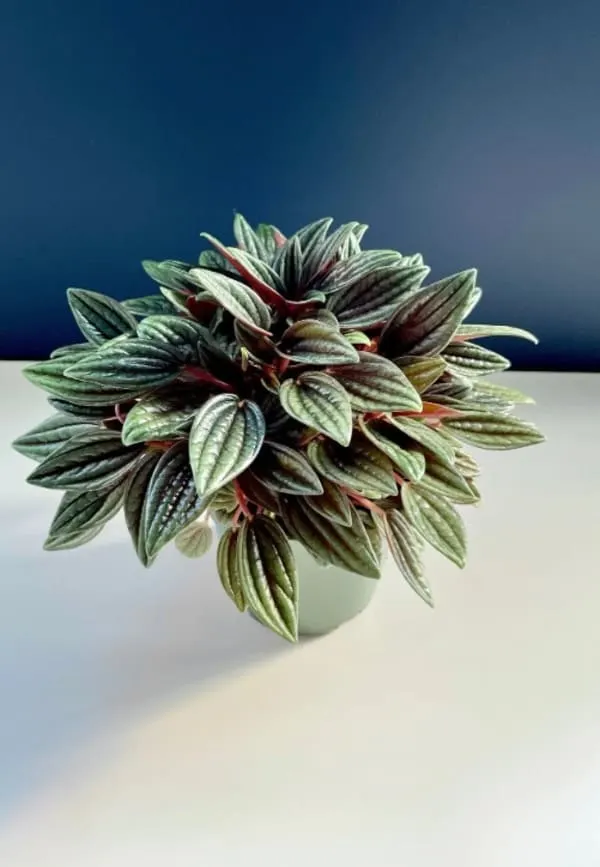
Peperomia plants typically have thick, oval-shaped leaves and are most commonly green or variegated.
They are popular small indoor house plants because they are usually low maintenance and easy to care for.
Health Benefits:
Some health benefits of this plant include air purification, increased humidity, and possibly helping to reduce stress.
To Care For This Plant:
– Provide indirect, bright light.
– Avoid overwatering.
– Keep soil moist but not soggy.
– Feed regularly with fertilizer.
– Prune as necessary.
27. Parlor Palm.
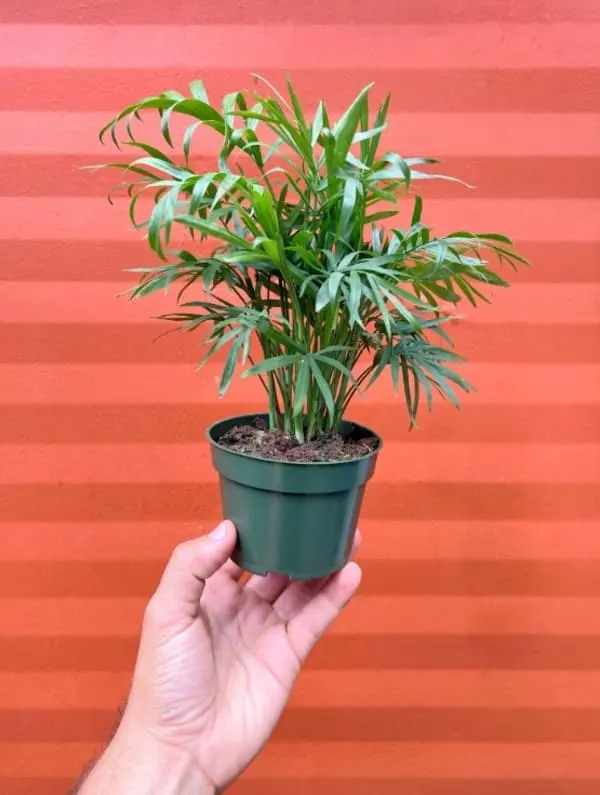
Parlor Palm plants are a popular small house plant because of their lush, green foliage. They have long, slender leaves that radiate from a central point from the base of the plant.
Health Benefits:
The Parlor Palm is known to be an air-purifying plant, able to remove toxins from the air and reduce stress. Additionally, the plant is easy to care for and maintain.
To Care For A Parlor Palm:
– Place in bright, indirect light.
– Water when the top inch of soil is dry.
– Mist regularly.
– Feed with a liquid fertilizer every few weeks.
– Prune as needed to maintain the desired shape.
– Repot every few years as needed.
28. Jade Plant.
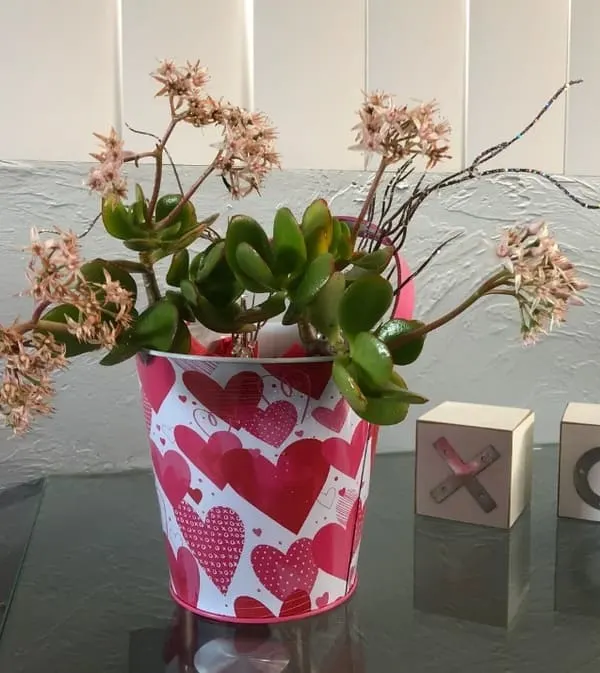
Jade plants are succulents with oval-shaped leaves that are smooth and shiny and can be a light to dark green. The leaves are usually arranged in a rosette pattern. These plants have thick, woody stems and branches and can grow up to 3 feet tall.
Jade plants are popular small house plants to own because they are easy to care for and require minimal maintenance. They are also known as good luck house plants and can bring fortune to their owners.
Health Benefits:
The health benefits of this plant include improved air quality, reduced stress, improved sleep quality, and better focus.
To Care For This Plant:
– Place the plant in bright, indirect sunlight.
– Water when the soil is dry.
– Fertilize bi-monthly in the spring and summer.
– Prune regularly to shape.
– Propagate new plants by taking stem cuttings.
29. African Violet.
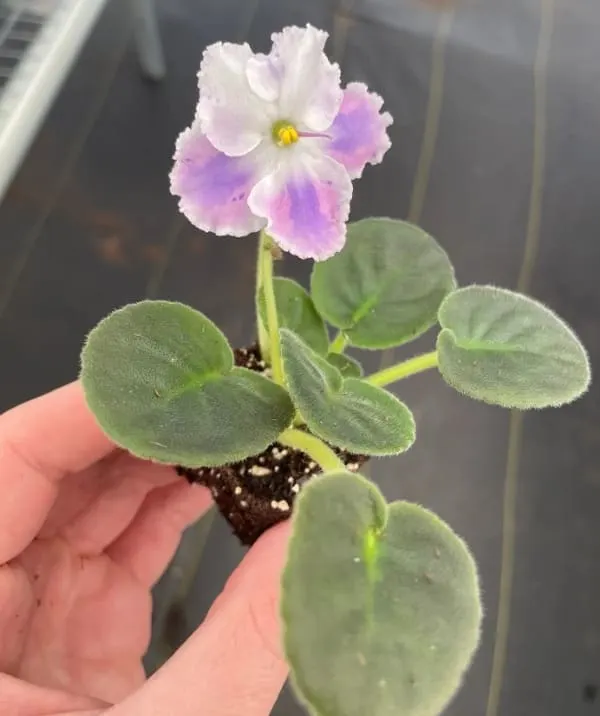
African Violet plants are small house plants famous for their bright and vibrant colors, with deep purple and pink being the most common. They have thick, fuzzy leaves and small, sweet-scented flowers too.
The African Violet plant is a popular small plant because they are straightforward to grow and maintain. They require very little care and can survive in almost any environment. They are beautiful and can add color to any home or office too.
Health Benefits:
This plant’s health benefits include helping reduce stress and improve air quality. They can also help to reduce inflammation and improve mood.
Care For African Violet Plants:
– Place in a bright, indirect area.
– Keep soil moist with regular watering.
– Use a weak fertilizer once a month.
– Prune regularly.
– Check for pests and diseases regularly.
30. Areca Palm.
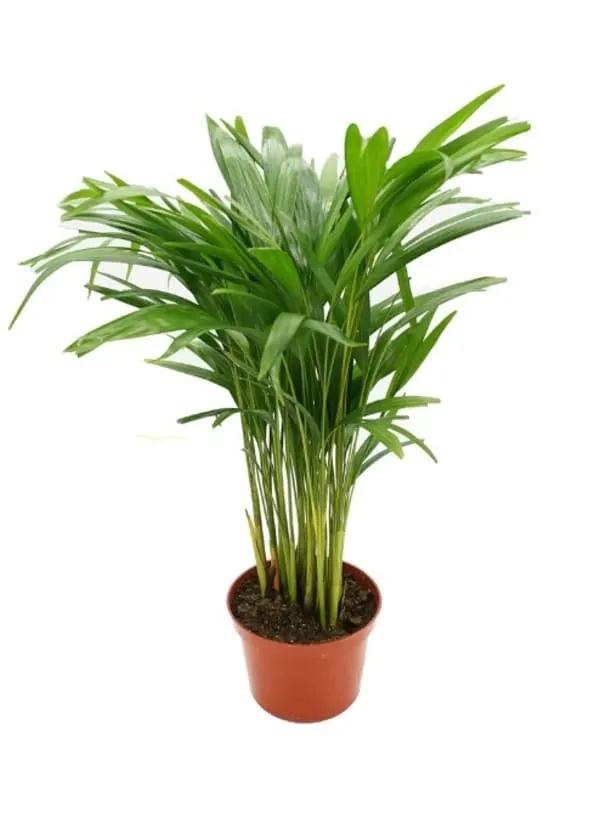
The Areca Palm plant is a tropical plant with long, graceful, feathery fronds that come from a single trunk. It is a popular small houseplant because it adds a bright and vibrant touch to any room.
Its fronds can be up to six feet long and create a beautiful, whole look.
It is also a very low-maintenance plant; it only needs to be watered once a week and enjoys bright, indirect sunlight.
Health Benefits:
The Areca Palm is a great air purifier, removing toxins such as formaldehyde, xylene, and toluene from the air. It is also believed to help reduce stress levels and improve air quality.
Caring For An Areca Palm:
– Place in a bright, indirect sunlight location.
– Water once a week, allowing the soil to dry between waterings.
– Keep away from drafts and direct heat/sunlight.
– Dust fronds as needed.
31. Azalea.
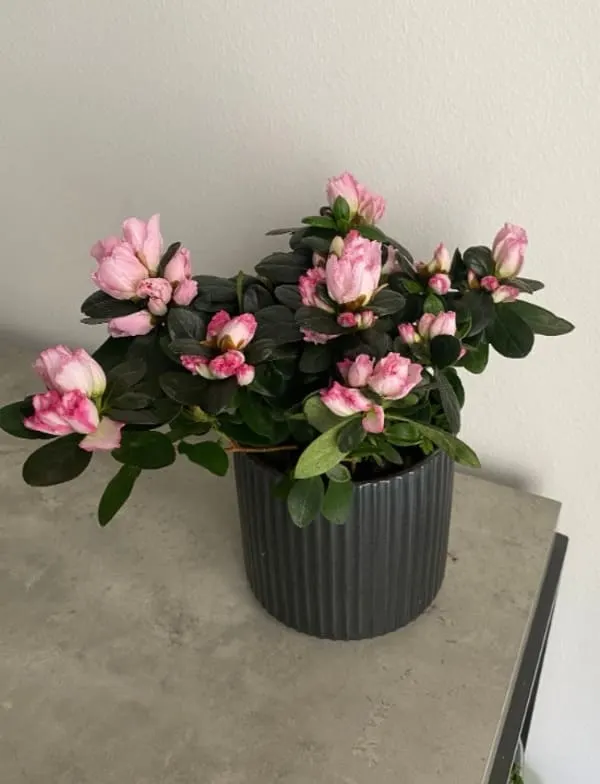
Azalea plants are characterized by their bright flowers, glossy green leaves, and thick, bushy shape.
They come in various colors, such as pink, white, purple, and red, making them popular for home decor.
The Azalea plant is popular because it is easy to care for, adds vibrant colors to any room, and is known to help purify the air.
Caring For An Azalea Plant:
– Place in bright but indirect sunlight.
– Water when the soil feels dry.
– Keep soil moist but not overly wet.
– Fertilize during the spring and summer months.
– Prune after blooming to keep the shape.
32. Chinese Hibiscus.
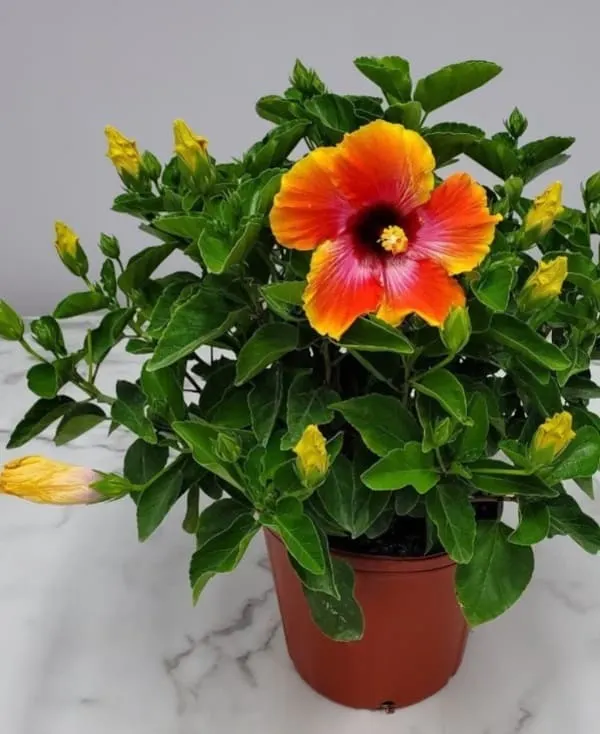
Chinese Hibiscus plants are tropical plants with large, bright, colorful flowers that bloom up to 6 inches in diameter. They have glossy green foliage and can reach up to 10 feet in height.
They are popular small indoor houseplants because they are easy to care for and require minimal maintenance.
Health Benefits:
The health benefits of the Chinese Hibiscus plant include cleaning the air of pollutants and toxins and boosting mood and productivity.
To Care For A Chinese Hibiscus Plant:
– Place in a well-lit spot, preferably near a sunny window.
– Water regularly, but do not over-water.
– Feed with a balanced soluble fertilizer every two weeks.
– Prune regularly to encourage new growth.
– Watch for pests and diseases and treat them promptly if needed.
33. Dieffenbachia.
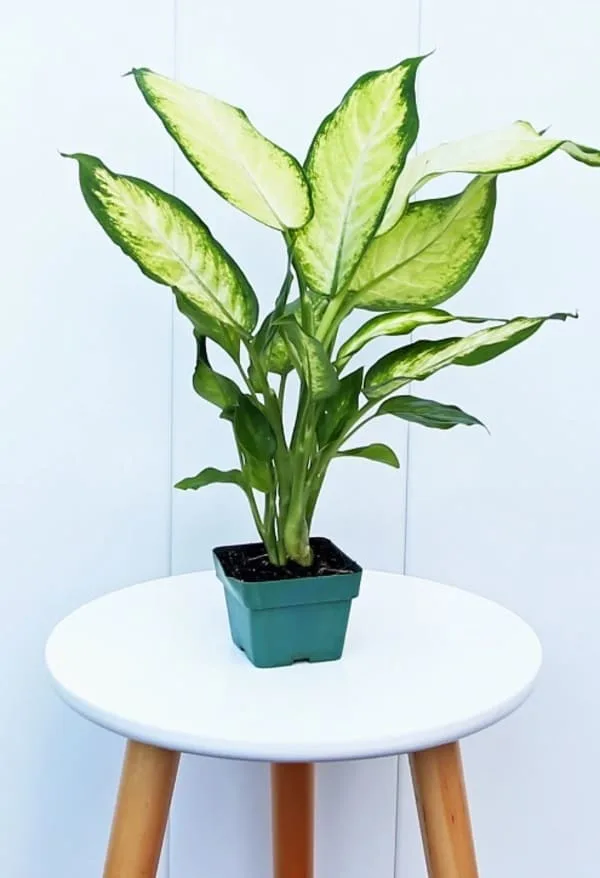
Dieffenbachia plants have large, glossy, tropical-looking leaves that come in various shapes, sizes, and colors.
They are popular small house plants for their ease of care and durability and their ability to purify the air in your home.
Health Benefits:
They are also known to reduce stress and anxiety, as well as reduce toxins from the air.
Care For Dieffenbachia Plant:
– Place in bright, indirect sunlight.
– Water regularly and allow the soil to dry out between waterings.
– Fertilize monthly.
– Prune if leaves become discolored or damaged.
– Monitor for pests and diseases.
34. Climbing Ficus.
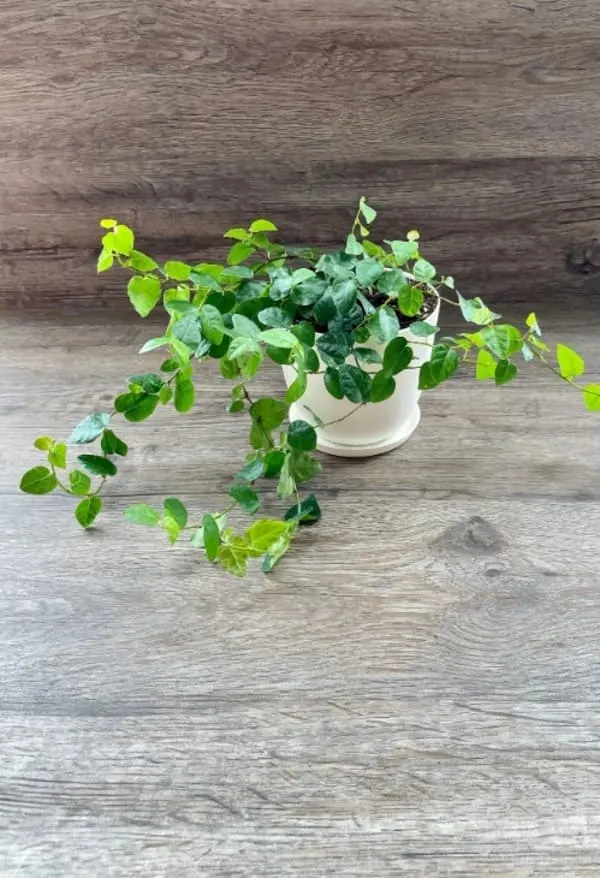
Ficus plants are known for their glossy green leaves and are available in various sizes and shapes. They can be found in small bush-like forms or as graceful trailing vines and grow up to 10 feet tall or in length.
Ficus plants are also popular small indoor houseplants because they require little maintenance and care and can thrive in most living environments.
Health Benefits:
They are a great way to add some green to your living space, and their beautiful foliage can help to brighten up any area.
Additionally, Ficus plants are known to help remove toxins from the air and can improve air quality in your home.
To Care For A Ficus Plant:
-keep it in a well-lit area, but not in direct sunlight.
-Water the plant when the soil is dry, and be sure not to over-water.
-Make sure to use a well-draining pot and an appropriate soil mix.
-Prune the plant regularly to promote growth.
35. Croton.
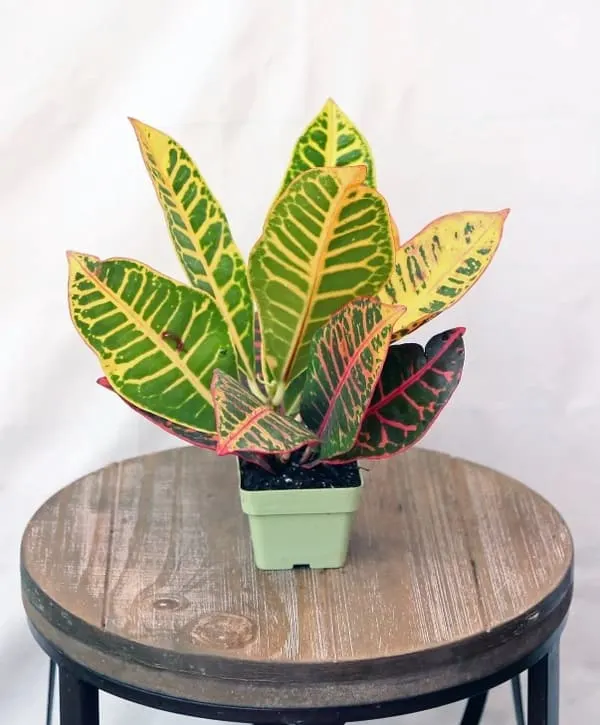
Croton plants are small, brightly-colored plants with oval-shaped, thick leaves that come in various colors, including yellow, orange, red, pink, and green.
They can also have a variegated or multi-colored pattern. The Croton plant is a popular small house plant because it is relatively easy to care for and adds a touch of vibrant color and life to any living space.
